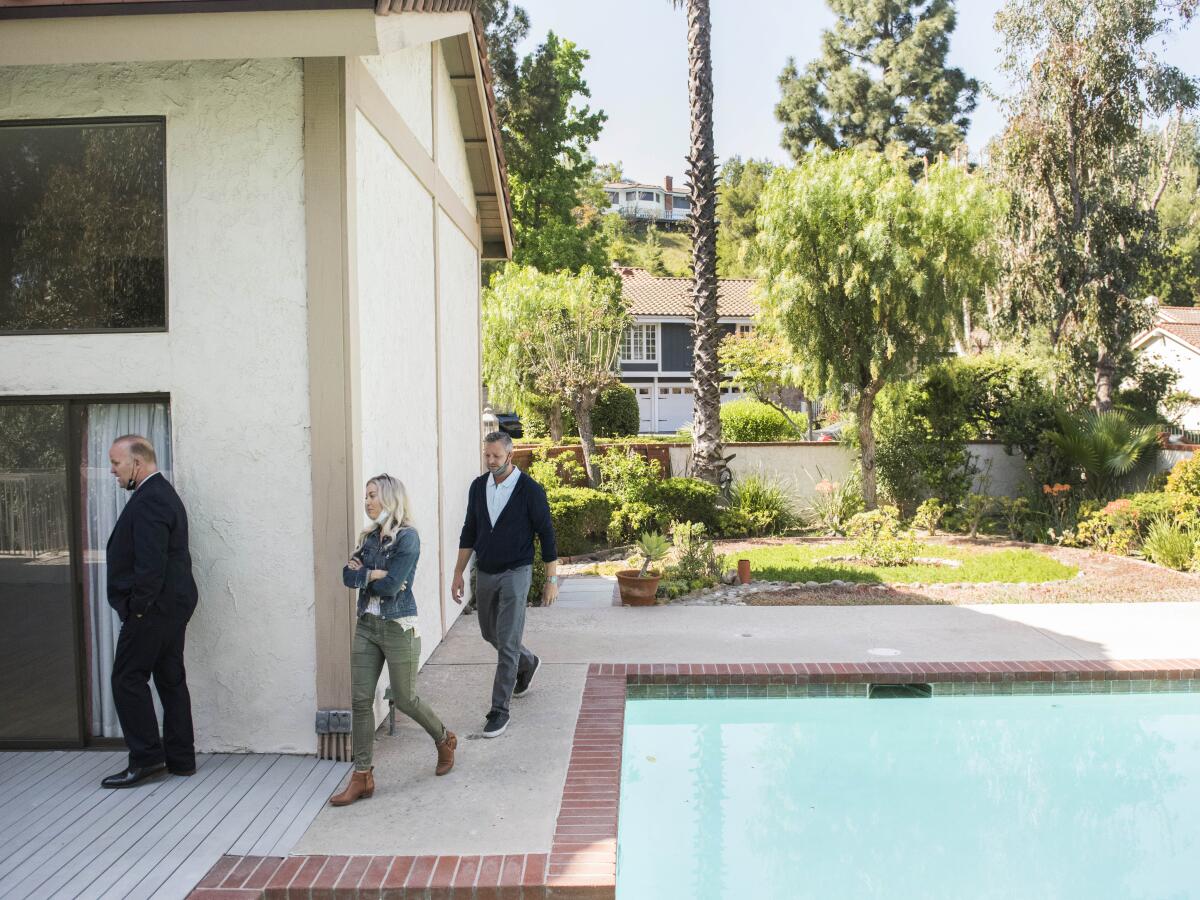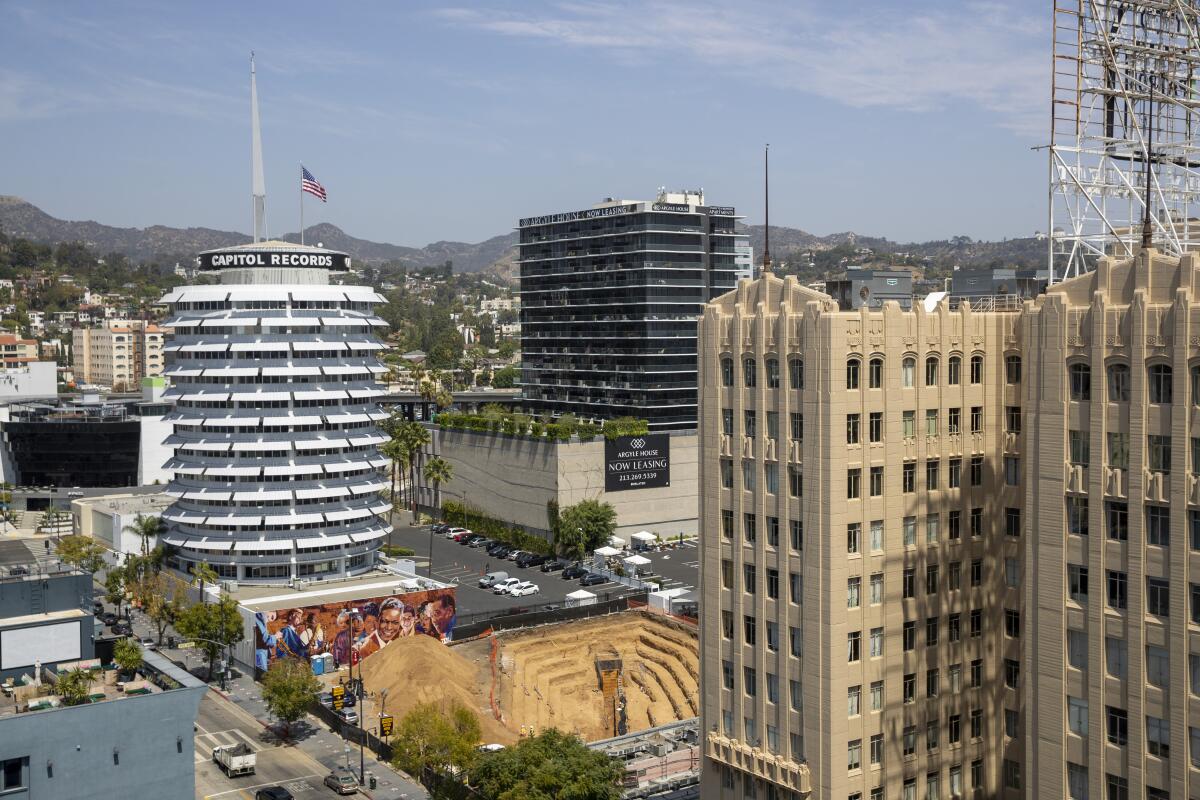Real Estate newsletter: An action star’s bulletproof desert compound
- Share via
Welcome back to the Real Estate newsletter. If you had your pick of the litter, what would you choose: a sexy smart house in Beverly Hills, a sprawling estate in Beverly Park or a bulletproof compound in the Arizona desert?
Those are three of the most intriguing new listings up for grabs, and each boasts a notable owner. It shouldn’t come as a surprise that the bulletproof option belongs to Steven Seagal, the action star behind the films “Hard to Kill” and “Today You Die.” Make sure to call first before you visit for the open house.
The Beverly Hills smart house belongs to Will Arnett, who had it designed in the style of famed modernist architect Ray Kappe. And the Beverly Park estate belonged to Sumner Redstone, the late media mogul who owned the palatial home for nearly two decades.
If you’re eyeing these homes or any others, you’ll probably have to compete aggressively for it. Housing reporter Andrew Khouri found that houses are selling quicker than ever before, and one three-bedroom spot in Hawthorne had 39 offers before it went into escrow for $116,000 over the asking price only six days after listing.
Over in Hollywood, metro reporter Rong-Gong Lin II looked into what’s delaying a skyscraper that would bring more than 1 million square feet of office, retail and residential space to the neighborhood. Spoiler: The site sits on an active earthquake fault.
As Oscar season approaches, columnist Carolina A. Miranda noticed something about the architecture in this year’s best picture nominees — they all channel a feeling of being unsettled. In a pandemic year with millions estranged from the familiar, the films feature vans, trailers, guest rooms and mobile homes, depicting an architecture seen from the point of view of characters to whom it does not belong.
While you’re at it, visit and like our Facebook page, where you can find Real Estate stories and updates throughout the week.
A home fit for an action film
Action star Steven Seagal is once again shooting for a sale in the Arizona desert, listing his 12-acre compound outside Scottsdale for $3.4 million.
The martial artist-turned-actor bought the property for $3.5 million in 2010 and has offered it up multiple times in the last few years, most recently for $3.775 million in 2019.
The custom-built contemporary is exactly what you’d expect for Seagal, a movie veteran whose dozens of film credits include titles such as “Above the Law,” “Hard to Kill,” “Under Siege,” “On Deadly Ground,” “Driven to Kill” and “Today You Die.”
It’s tucked into a guard-gated community, and floor-to-ceiling windows made of bulletproof glass take in the sweeping desert landscape of mountains and cacti. The house — a 9,000-square-foot concoction of stone, copper and glass — is perched on a hillside lot and features lifelike statues that survey the exterior.
An award-winning abode
“Arrested Development” actor Will Arnett is trying to take advantage of the seller’s market in Southern California. A year after offering up his Beverly Hills Post Office home at $11 million, he just put it back on the market for $8 million.
Records show he paid $2.86 million for the property in 2015, and the architectural gem was finished two years later. Clad in glass and steel, the L-shaped residence is based on the design of modernist architect Ray Kappe, who helped found the Southern California Institute of Architecture (also known as SCI-Arc).
The prefabricated house, which received an Award in Excellence from the L.A. Business Council in 2018, consists of six modules that come together to create a sleek, boxy frame with five bedrooms and 4.5 bathrooms. The L shape creates a towering atrium at the front of the home, and out back, terraces overlook a backyard with an infinity-edge pool, cold plunge and sauna.
Media mogul’s trophy home surfaces for sale
Another noteworthy estate is fresh on the market in Beverly Park, where the longtime mansion of late media mogul Sumner Redstone just surfaced for sale at $27.9 million.
Redstone, the billionaire head of ViacomCBS who died last year, owned the palatial home for nearly two decades. He bought it in 2002 from “Rocky” star Sylvester Stallone for $14.5 million, about half of its current asking price.
Coincidentally, Stallone is still making moves in the star-studded enclave. He recently listed his 21,000-square-foot showplace on 3.5 acres in the same cul-de-sac as Redstone’s place for $110 million.
Houses selling faster than ever

Homes are selling at warp speed nationwide, forcing would-be buyers to make snap decisions on what is typically the biggest purchase of their lives, writes housing reporter Andrew Khouri. In California, houses haven’t sold faster in at least three decades, according to data from the state’s main Realtors group.
California’s housing market has been tight for years. But these are no regular times. Instead of the traditional open house where dozens of people flow in at their leisure and can stay for hours, pandemic rules limit showings to one group at a time.
One couple, the Szemereis, had 30 minutes to tour a 2,092-square-foot home in North Tustin. They overstayed their slot by a bit, on the way out passing another couple awaiting their own timed tour. The Szemereis’ agent, Derek Oie, told them: Be aggressive. The property will have multiple offers.
“It’s almost like you speed date and then you are expected to marry someone,” said Vik Szemerei, 39, who put in an offer that weekend, one of a dozen that were submitted. “My wife and I were like: On the one hand we will be so thrilled if we get it. And on the other hand, we are going to look at each other and say, ‘What did we just do?’”
Hollywood skyscraper vs. lurking quake fault

When developers announced a decade ago that they intended to build Hollywood’s first skyscrapers along an aging, fading block of the famed boulevard, boosters saw it as a transformational moment, writes metro reporter Rong-Gong Lin II.
Gentrification was already remaking Hollywood with a series of big high-end developments, but this project was different. The complex would alter the L.A. skyline and add more than 1 million square feet of office, retail and residential space. Some neighboring residents and others protested, saying the soaring towers would block views, invite horrific traffic and irrevocably alter Hollywood’s character.
But those concerns ended up taking a back seat to a much larger question: What was lurking under the land?
For eight years, there has been a high-profile argument over whether active earthquake faults run directly under the site of the proposed development, making it too dangerous to build there. The California Geological Survey — the state’s scientific authority on the location of earthquake faults — suggested in 2013 and concluded in 2014 that an active fault capable of generating a magnitude 7 earthquake runs through the site.
Film architecture reflects the pandemic
The first time you see Jacob and Monica’s house in “Minari,” it’s from the vantage point of a moving car, writes columnist Carolina A. Miranda. Images of bucolic landscape hugging a country lane give way to an open field. In the middle of that isolated field sits the couple’s future house, which is neither a brightly painted country farmhouse nor charming log cabin.
In a movie season turned upside down by COVID-19, it seems right on brand that the eight best picture nominees for this year’s Academy Awards all channel a feeling of the unsettled — in their narratives, but also in the architecture that they depict.
In these films, the aspirational, single family dwelling of the mid-20th century seems but a hazy dream. Instead, characters carve out their existence in the in-between spaces: vans, trailers, guest rooms and the ramshackle houses shared by activists fighting for a common cause.
What we’re reading
In a hot housing market, the question on everyone’s mind is naturally, “How long will it last?” The New York Times says it largely depends on where you live but hinges on two trends: rising mortgage rates and incredibly tight inventory, which could keep markets strong through the rest of the year.
Speaking of tight inventory, Reuters reported that U.S. home sales fell to a seven-month low in March to just over 6 million, well short of forecasts. The effect is making houses hard to buy in pretty much every market across the country.
Inside the business of entertainment
The Wide Shot brings you news, analysis and insights on everything from streaming wars to production — and what it all means for the future.
You may occasionally receive promotional content from the Los Angeles Times.




